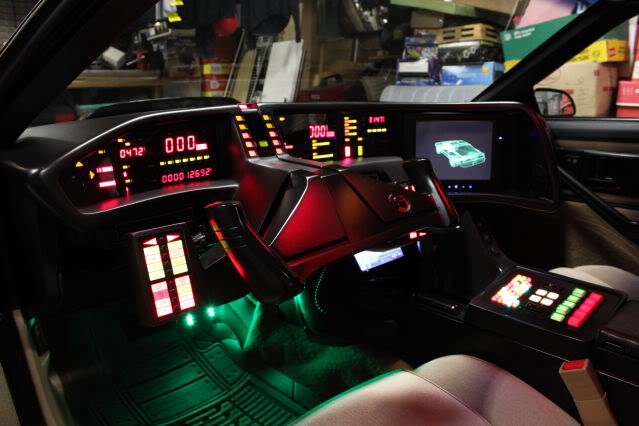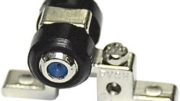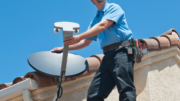Well, it kind of depends on your definition of “watch TV” and “moving.”
Let’s assume for a minute that you’re talking about over-the-air antenna TV and the car is going at something like a normal speed. Then, unfortunately the answer is no. Digital signals don’t work in moving vehicles because they’re designed to get “locked in” in a way that just isn’t possible without standing still, or being close to standing still. This is a compromise that was built into the digital TV system when it was designed in the early 2000s. At that time it really wasn’t possible to send a digital data stream that would survive some of the things that happen to a signal when you try to receive it when it’s moving.
The next standard, called ATSC 3.0 and marketed as NextGenTV, will allow you to watch TV in a moving car. But you’ll need a different TV or a converter box to do it. Neither is available at the time of this writing in 2020.
Why this happens
When you’re moving relative to a signal, there’s a slight drift to the frequency as you pick it up. If you’re old enough you might remember that there was a time when you had to turn the tuning knob as you got further away from the broadcast tower. Today that stuff is corrected digitally, but when you’re talking about the technology that existed when digital TV was invented, it wasn’t possible. So you can lock in no matter how far away you are (as long as there’s a signal) but you can’t lock in if you’re moving.
The threshhold is about 15mph. If you’re going slower than that you can probably watch over-the-air TV. So, if you’re thinking you might catch your favorite shows while riding a bike, you’re probably ok technically. (I still wouldn’t watch TV while bicycling, it seems like a dumb idea.)
Why it shouldn’t happen
Really, getting broadcasts in a moving vehicle shouldn’t be a problem. After all, we get cell signals in our cars all the time. More than anything it’s a failure of the technology that was available back in the 1990s. They knew that they could broadcast TV signals better if they just didn’t care about whether or not it worked in a car. Interestingly, the digital TV standards in Europe were developed at the same time and don’t suffer from the same problem.
What do you mean “TV?”
In order to understand the question, though, you need to define “watching TV.” Today, streaming over cellular is so popular, most folks don’t give it a second though. The cellular system is mobile by design. It’s engineered to deal with the problems caused by moving from place to place. In the dawn of the digital TV age, the fastest digital data was about 10kbps or .01Mbps. Today you can get 100Mbps or more in a moving car. And that’s definitely fast enough to stream live video, which really only needs a steady stream of 10-15Mbps on the high side.
We used to use the term “watch TV” to mean watching a live broadcast from an established broadcast source. Our definitions have changed, though. More and more that term means streaming video from any of thousands of appss, possibly millions, and most certainly you can do that in a moving car (please don’t do it if you’re the driver.)
Where it’s all going
Over the years there have been many attempts to create a system that would let you watch live, over-the-air TV from a moving car. They’ve never really caught on in the market. For now, streaming is your only solution. There’s a service called Locast which will stream video to your phone if they serve your area. Otherwise, your best bets are Netflix, Hulu, and that sort of thing.
If the new broadcast standard does take off, it will be 2024 or so before we see major growth there. At the time of this writing there’s really not any consumer hardware out there yet, and pro-grade hardware is very expensive.
In the meantime, live your best digital life when you shop the great selection at Solid Signal!





